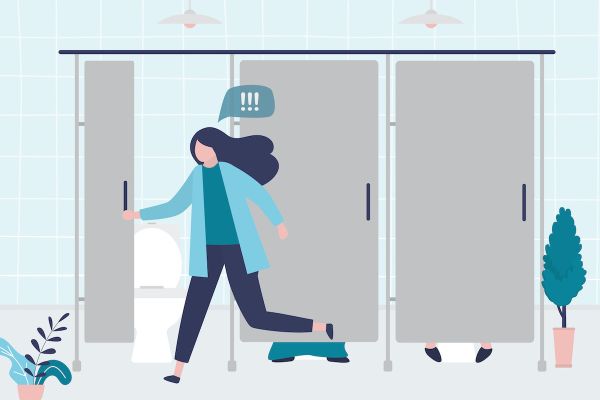Mention the word Botox and most people will think about the popular wrinkle remedy. As it turns out, Botox has some other useful applications, including helping those who suffer from overactive bladder live better quality lives.
Symptoms of an overactive bladder typically include frequency of urination, frequency of urge to urinate, loss of bladder control and increased urinary leaks, all of which can be embarrassing and may limit personal activities and freedom. While unpleasant, these symptoms are not uncommon and are experienced by about 12% of the population, said Fadi Darwiche, MD, MRCS, formerly at Roswell Park Urology.
As a specialist working within the Roswell Park Care Network, Dr. Darwiche helped patients in Niagara Falls, NY, access services and treatments that have been developed with the expertise of Roswell Park Comprehensive Cancer Center’s world-renowned physicians.
“It's very common to have symptoms of an overactive bladder,” said Dr. Darwiche. “Detrusor overactivity, also known as bladder spasm, can trigger a frequent need to urinate even when the bladder isn't full. We’ve learned through research and studies that when we block the release of acetylcholine, the main neurotransmitter to the bladder, it’s like cutting the electrical wire on a tool and changing how it operates. When injected into the bladder muscle, Botox can inhibit over-activity, leading to fewer urges and reduced incontinence.”
Symptoms of an overactive bladder may be caused by neurogenic disorders like spinal cord injury, stroke and multiple sclerosis. In many cases though, overactive bladder is idiopathic, meaning it arises spontaneously with no identifiable cause. Botox, approved by the FDA for the indication of overactive bladder since 2013, is used primarily when treatments, including medications, restriction of dietary irritants like caffeinated beverages, alcohol, spicy and acidic foods, as well as bladder retraining, and pelvic floor muscle rehabilitation aren’t effective.
Treatment for an overactive bladder
“Botox is most commonly used as a treatment for idiopathic disorders that cause involuntary contraction of the bladder muscle,” said Dr. Darwiche. "Studies and patient experiences continue to demonstrate that when bladder spasms are inhibited or reduced, bladder muscle control is increased, reducing incontinence and giving people improved control.”
The bladder Botox procedure takes about 15 minutes to complete and can usually be done at the Niagara Falls, NY, clinics under local anesthesia. After the bladder is numbed and emptied, a cystoscope, a flexible thin instrument tube with a camera, is used to administer approximately 20 small injections into the bladder muscle.
Patients can resume normal activities after the procedure. Maximum results are usually achieved within 10-14 days of treatment and, as a precaution to avoid infection, a short-term protocol of antibiotics is typically prescribed. Temporary side effects may include straining to void, incomplete bladder emptying and urinary retention that usually resolves within two to six weeks. Patients taking aspirin or blood thinners may occasionally experience bleeding.
How long does bladder Botox last?
“We have patients reporting six to nine months of improved control,” said Dr. Darwiche. “It’s a safe procedure to repeat on a regular basis and studies show that recurring treatments result in similar or even improved response in some cases.”
Botox isn’t the right treatment for all types of urinary incontinence. “We don’t use Botox for stress incontinence, such as a leaky bladder caused by coughing, sneezing or laughing. In these types of cases, Botox isn’t effective because the leaks aren’t related to a spasming bladder and can usually be treated with pelvic floor rehabilitation and surgeries to support the urethra," he said.
For patients, regaining bladder control always helps restore confidence, wellbeing and comfort. “Imagine driving your car or being in a meeting and constantly needing to find a bathroom,” said Dr. Darwiche. “Improving bladder control and reducing urges can help people return to their normal routines, improving their quality of life.”
Helping patients regain confidence and pleasure in their lives is an important focus the urology team. “Working in an outreach community that is close to our patients is important,” he says. “It's a simple procedure but being local makes it more convenient and easier for patients to be treated or follow up with any concerns.”
Botox for an overactive bladder might even have additional benefits, said Dr. Darwiche. “If we can help people reduce urges, incontinence and embarrassing accidents, their reassurance and renewed confidence could result in fewer wrinkles on their face as well.”



